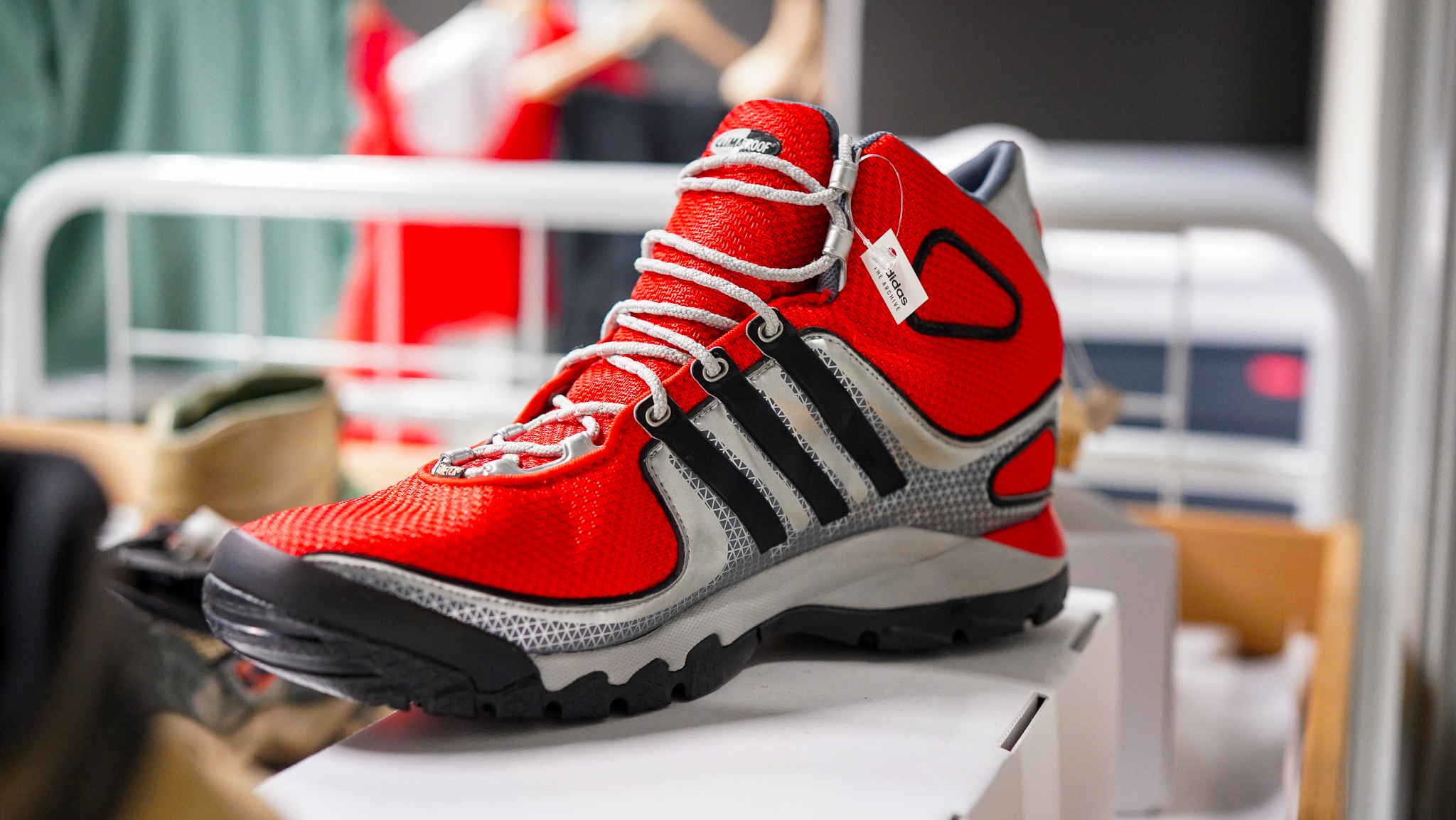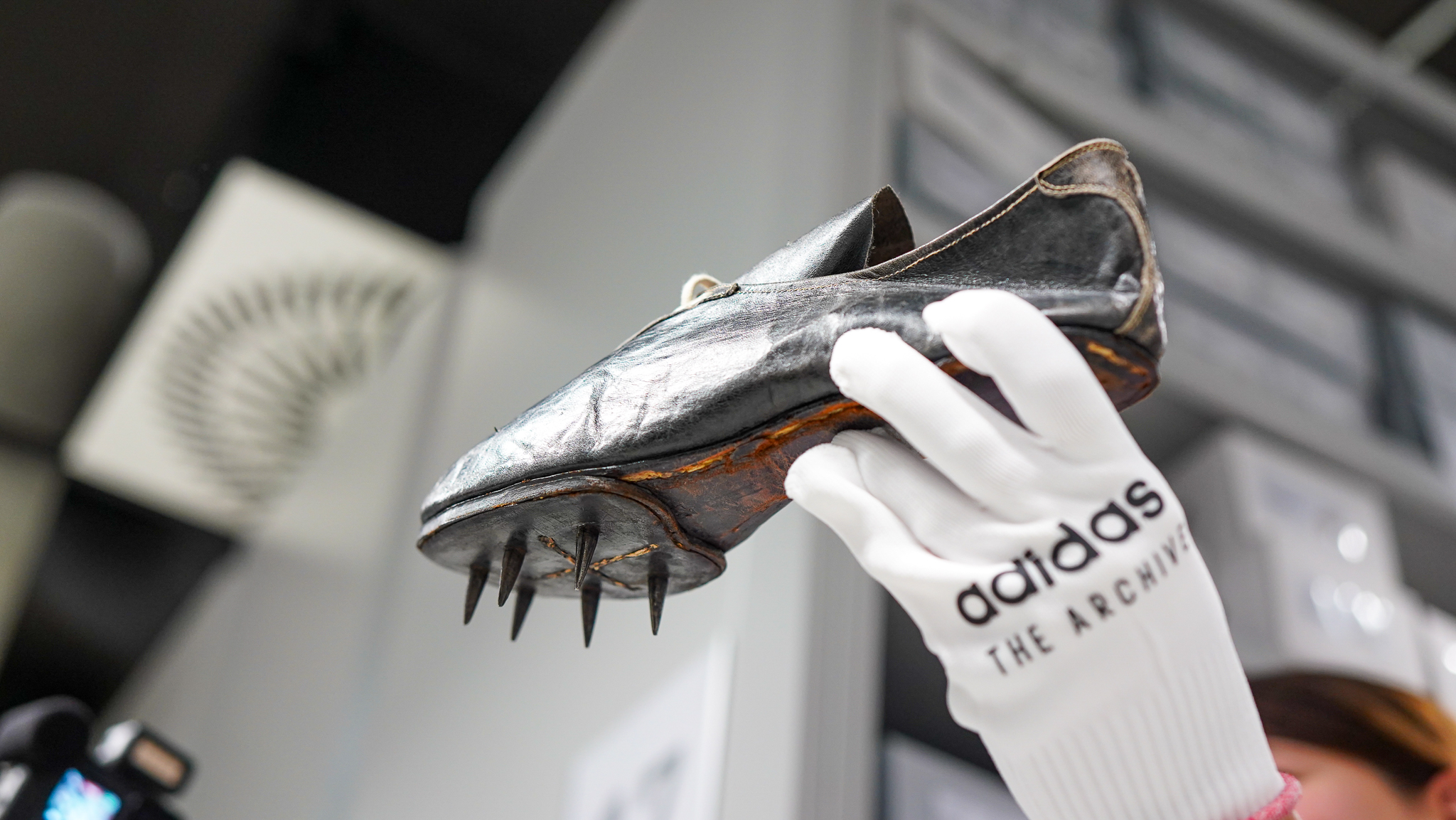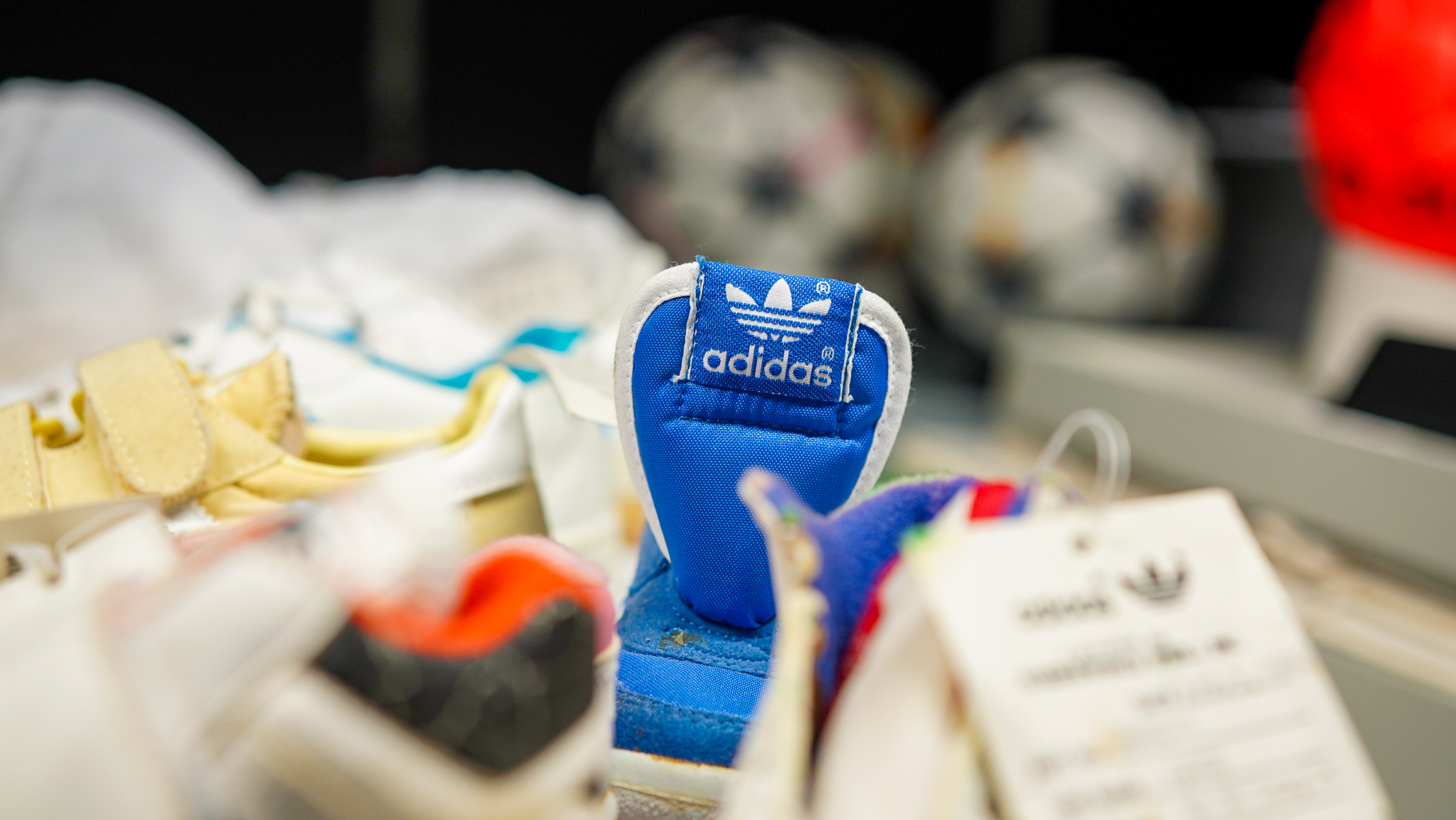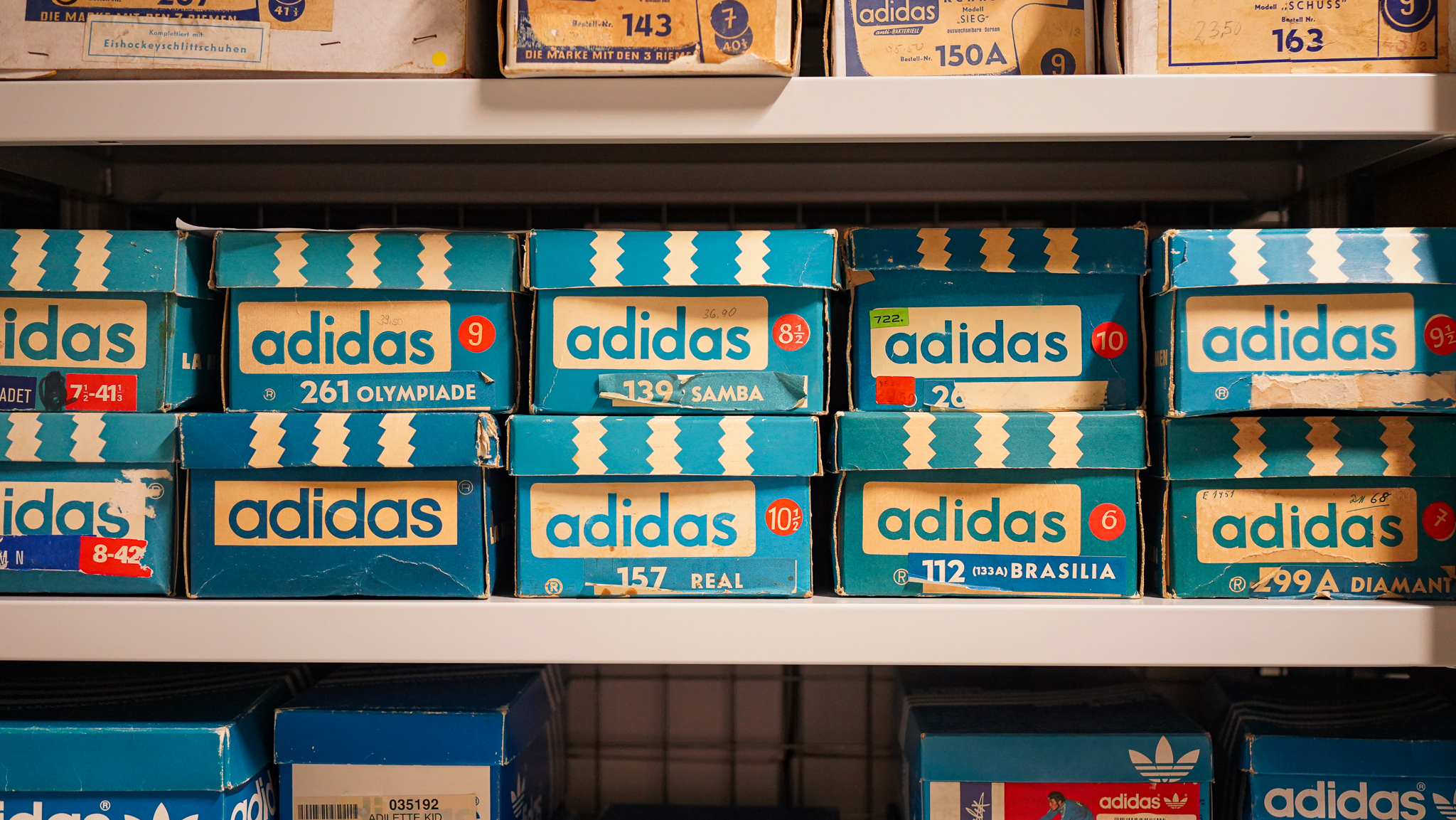

Entering the Adidas Archives in Herzogenaurach, Germany, is like stepping into hallowed grounds. The reverence is palpable as you instinctively lower your voice, and your eyes widen, taking in the magnitude of the space.
You’re surrounded by artefacts that have graced the hands and feet of some of the most illustrious athletes of the past century, a testament to the brand's enduring legacy.
Founded in 2009, the Archive’s purpose is to preserve Adidas’ legacy and history. “Our founder collected shoes from athletes to learn and improve them, which were initially kept in a museum,” says Adidas historian Sandra Trapp.
The collection now includes about 40,000 catalogued products, with another 40,000 in storage and a corporate file archive of up to three kilometres of files. It’s a lot of stuff to keep track of.
If you, like me, are wondering why so many products are still in storage, Sandra explains that archiving a single product can take up to eight hours. If only one person worked on the project, adding the remaining items to the storage would take 320,000 hours. That’s 36.5 years of work, 24/7.
The reason for my visit to the Archives is to learn more about Adidas Terrex. The outdoor apparel-focused brand is not particularly secretive, but it’s not easy to find much about its early years.

Climbing legend Alexander Huber showing us the gear that started Adidas Terrex
Thankfully, climbing legend Alexander Huber is on hand to give us a little insight into the formative years of Terrex. As the story goes, Alexander and his brother, Thomas (along with Stephan Siegrist), wanted to be the first to ascend three peaks in Antarctica in 2008, as chronicled in their book Eiszeit (Ice Age).
Get all the latest news, reviews, deals and buying guides on gorgeous tech, home and active products from the T3 experts
At the time, the brothers were affiliated with a British outdoor manufacturer. However, since they were born and raised in Bavaria, the Hubers were keen to use a German company to supply them with gear for the challenge.
Adidas, despite not having a line of suitable outdoor gear at the time, was a natural choice for the brothers. Their shared Bavarian roots and the Hubers's desire to use a German company for their Antarctic expedition led them to Adidas.
The lack of existing gear didn’t deter them from collaborating. In fact, it spurred them on, and the lessons learned from this adventure ignited a new passion within Adidas for outdoor clothing.

Adidas Super Trekking Boots
And with that, Terrex was born. Sandra, with the help of Alexander, proudly showed us the actual trousers and jackets worn on the Antarctic expedition. We also got to see many of Adidas’ earlier outdoor boots, including models from the Adventure line and the iconic Super Trekking Boots.
Moving on from the Terrex display prepared specifically for us – and includes Tom Evans’ Western States 100-winning Adidas Terrex Agravic Speed Ultra – we get to admire other treasures in the Archive.

One that makes everyone cover their mouths in awe is the first-ever track spike created by the brand in the 1920s that, at the time, wasn’t called Adidas. The shoes look tiny and have the biggest spikes I’ve ever seen in my life.
Being in close proximity to something so pivotal in sports history does send a chill down your spine. It might just be the cool temperature in the Archives, though; who knows?
“We follow museum standards, with 18 degrees Celsius (64.4°F) and 55% humidity, which is a mixed climate to accommodate various items,” explains Sandra. “Stability is crucial, so we limit the number of people and use acid-free boxes and paper and special shelving systems to protect against water, fire, and other damages.”

In fact, not even Adidas employees are allowed in. At least not without special permission. Sandra says visits are limited to special requests. Press, media, and brand inductions also visit the archive in person. People working for Adidas can also access the collection digitally 24/7.
The archives contain more than shoes, such as apparel, balls (e.g. footballs and rugby balls), bags, rackets, and miscellaneous items. You’ll even see boxes in the collection, which are notoriously hard to find as they are always the first thing people throw away when they buy a new product.
With thousands of new Adidas products coming out every year, it’s impossible to add all of them to the Archives. “We have collection criteria: athlete-worn items, special events, new technologies, designs, materials, prototypes, limited editions, and first-time products [are selected],” she elaborates. “We also receive offers and maintain contacts with former employees who might donate items.”

Looking at the shelves full of products, one wonders if the Archives will outgrow its current space. After all, new products are being added continuously; surely, space will run out? “It’s a living archive,” Sandra says. “We aim to share more stories and use the archive to inspire new products. Our goal is to keep adding to our history and share it with everyone.”
As I walk out of the temperature-controlled room, I wonder if I’ll ever be able to see it again. We only scratched the surface of the vast collection hidden in the room – who knows what other treasures we missed?
Sliding my white gloves emblazoned with the ‘Adidas Archives’ in my pocket, I try my best to commit everything I’ve seen to my long-term memory. It’s much easier for Sandra, who has an eidetic memory—not a bad thing to have if you look after the ever-growing Archives.

Matt Kollat is a journalist and content creator who works for T3.com and its magazine counterpart as an Active Editor. His areas of expertise include wearables, drones, fitness equipment, nutrition and outdoor gear. He joined T3 in 2019. His byline appears in several publications, including Techradar and Fit&Well, and more. Matt also collaborated with other content creators (e.g. Garage Gym Reviews) and judged many awards, such as the European Specialist Sports Nutrition Alliance's ESSNawards. When he isn't working out, running or cycling, you'll find him roaming the countryside and trying out new podcasting and content creation equipment.